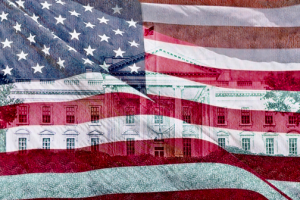
We’re a week into the month of June. That means we’re entering the time of the year (summer) when the market typically gets a little bumpy.
But I don’t want you to worry… Seasonal strength historically persists in June, especially after a positive May. And all of the major indices closed out the month of May nicely higher. The S&P 500 and Dow rallied 4.8% and 2.3%, respectively, while the NASDAQ soared 6.8% higher.
What’s interesting is that amidst this “May melt-up,” the stock market actually narrowed.
Consider this… At the conclusion of every quarterly earnings announcement season, I retest how Portfolio Grader is performing. The latest backtest showed that the top 5% of our more than 6,000-stock universe was the place to be invested. Also important, the top 60% of stocks with the highest fundamental scores (A, B and C Fundamental grades) have performed much better than the overall market.
Still, the fact is the summer can be a volatile time for the market. And that could certainly be the case this year as well. In fact, there are a few potential few market shocks that I’m watching for this summer, and you should be too.
So, in today’s Market 360, I’ll share four potential shocks that could happen this summer. Then, I’ll explain why, instead of panicking, it’s more important than ever to own stocks with superior fundamentals. So, I’ll also show you where to find fundamentally superior stocks that are primed to profit no matter what the market has in store.
Let’s dive in.
Potential Shock No. 1: Central Bank Action
Coordinated rate cuts are likely from several of the world’s major central banks this summer.
Just this week, the Bank of Canada (BOC) slashed its key interest rate by 0.25%, which brought it down to 4.75%. The BOC also noted that it’s “reasonable to expect further cuts,” if inflation continues to fall to its 2% target level. The European Central Bank (ECB) followed suit, also cutting key interest rates by 0.25% and bringing its key rate down to 3.75%. And the Bank of England (BOE) is anticipated to cut rates later this month.
Now, the Federal Reserve was also supposed to cut key interest rates in June. But when progress on inflation stalled, the Fed decided to postpone its first key interest rate cut until July or September.
Since the Fed will lag European countries in cutting key interest rates, “carry trades” are expected to increase. Essentially, carry trades are where foreigners put money in the U.S. in search of higher yields and a stronger currency. If these carry trades approach a trillion dollars or more, they could actually drive Treasury yields lower – and encourage the Fed to cut rates sooner rather than later.
So, let’s hope global yields decline and Treasury yields follow.
Potential Shock No. 2: Russia-Ukraine Tensions
If interest rates weren’t a big enough wild card for the stock market, the fall of Ukraine’s second-biggest city, Kharkiv, may be imminent. Russia is in the midst of a missile barrage to knock out electricity in Kharkiv and make the city unlivable. And with fighting between the two countries now in its third straight year, Ukraine is running out of men to fight Russia’s relentless assault.
Ukraine recently destroyed a Russian radar station designed to track incoming nuclear missiles. Despite Germany’s objection, NATO, via the U.S. and U.K., has supplied Ukraine with longer-range missiles that can strike deeper into Russia. France is also sending military advisors to assist Ukrainian troops, which are increasingly utilizing drones to fight Russian troops. So, the fighting is no longer just a border skirmish; it has escalated into a major proxy war funded by NATO.
We all hope that a ceasefire and peace agreement will ensue. But if the conflict continues to escalate, energy prices are headed higher. Crude oil markets are already on high alert for potential disruptions to Russian crude oil output, which has dropped steadily to its lowest level in the past 10 weeks.
Potential Shock No. 3: The First Presidential Debate
The political season is officially underway, with the first presidential debate scheduled for June 27.
Donald Trump’s campaign recently benefited from 500,000 new donors in the 24 hours following his “guilty” verdict in the New York criminal case against him. While Trump’s opponents may relish in calling him a “felon,” they effectively galvanized his supporters and caused fundraising for his campaign to soar. So, Trump has outraised President Biden in recent months.
The upcoming debate is vitally important to the Democratic party. President Biden will need to have the debate performance of his life to reassure his base. Otherwise, the calls to replace Biden at the Democratic National Convention will intensify.
Potential Shock No. 4: Private Credit Market
The other possible shock this summer could be the booming private credit market. Private credit soared from $432.9 billion in 2014 to $1.7 trillion in 2023 – and it’s on track to soar about $2.0 trillion this year.
Increasingly, the private credit and private equity worlds have become intertwined. The private credit industry now charges big management fees and shares profits with its managers, which builds out private credit markets with the private equity industry. The insurance industry is also increasing its investments in private credit.
In my opinion, the 11% yields that the private credit industry pays investors are not sustainable. As the industry grows and raids more private credit “rain makers,” bad loans will be made, potentially ” pricking” the private credit bubble.
The Best Way to Play Defense in a Chaotic World
Overall, it’s a chaotic world.
But amidst all this uncertainty, the stock market should meander higher. Remember, it’s a presidential election year, and candidates promising voters everything and anything tend to boost consumer and investor confidence. The underlying earnings environment also remains positive, as corporate profits benefit from inflation that allows companies to charge higher prices.
And if Treasury yields continue to dip lower (the 10-year Treasury yield slipped below 4.3% this week), the Fed may be more inclined to cut key interest rates sooner rather than later. When the Fed finally cuts key interest rates, the breadth and power of the overall market should improve.
The bottom line: We must stay focused and keep the odds stacked in our favor.
So, even though there are a few market-moving moments to look out for this month, our best defense always remains a strong offense of fundamentally superior stocks.
And my Breakthrough Stocks service is the perfect place to find them. This is where you’ll find some of the best small- and mid-cap stocks the market has to offer.
My current Breakthrough Stocks Buy List is characterized by 68.7% average forecasted annual earnings growth. I should also add that my Breakthrough Stocks beat the top decile of S&P 500 stocks with the highest analyst earnings revisions by more than two-to-one in May.
Yesterday, I announced three new buys to my Breakthrough Stocks subscribers that have average earnings surprises ranging from 34.4% to a whopping 183.3% that should climb higher in the coming months.
Click here to join me at Breakthrough Stocks to access the three brand-new buys today.
(Already a Breakthrough Stocks member? Click here to login to the members-only website now.)
Sincerely,

Louis Navellier
Editor, Market 360






